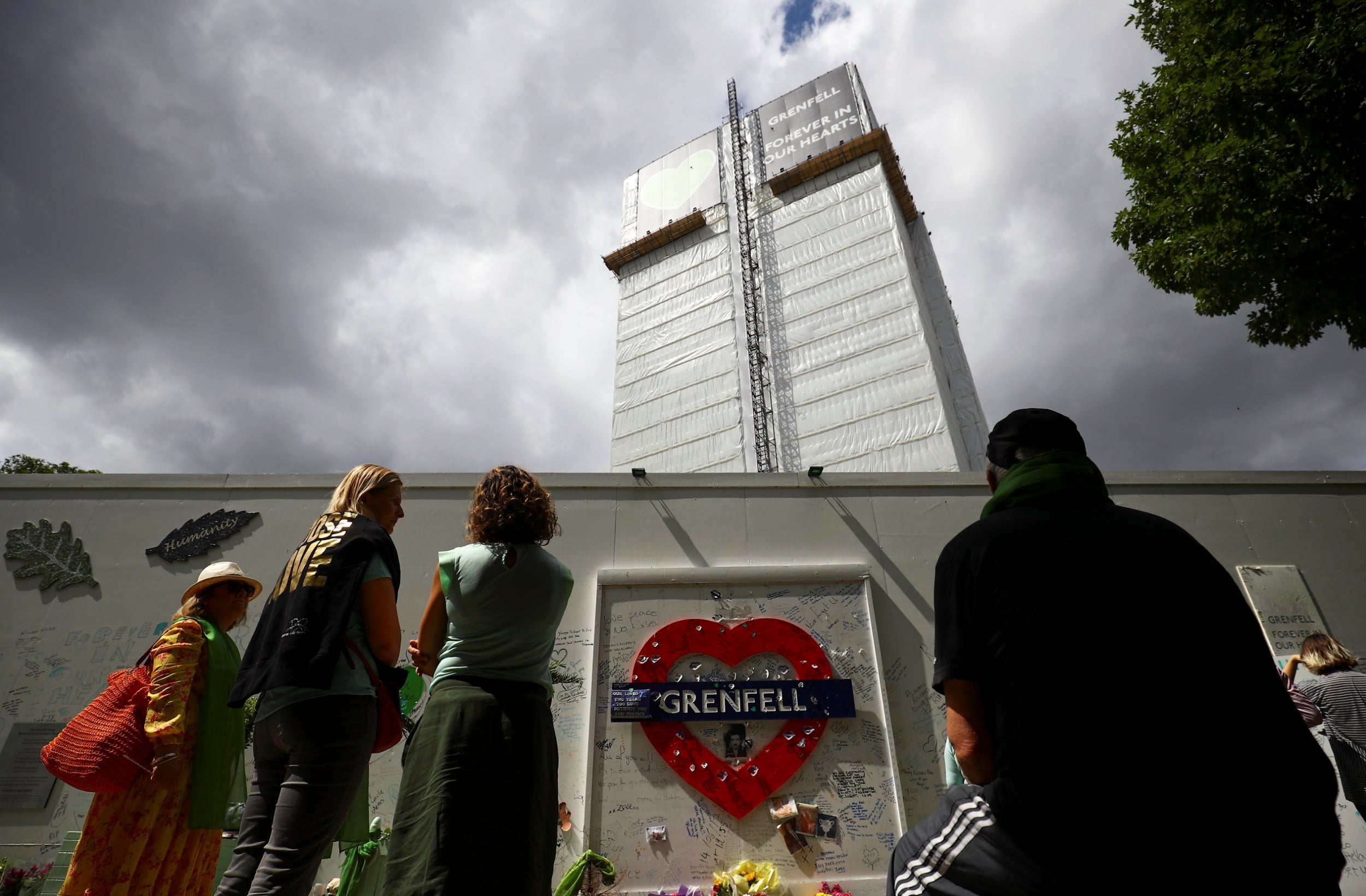Government falling behind on its promise to strip dangerous cladding three years after Grenfell Tower fire, says NAO report
At least 300 buildings still covered by dangerous material

The government is lagging behind its own expectations on its promise to strip all high-rise buildings of dangerous cladding, a report has warned.
Three years after the deadly Grenfell Tower fire killed 72 people, more than 300 buildings are still covered in aluminium composite material (ACM).
A report by independent watchdog the National Audit Office (NAO) found the government’s plans have “lagged behind (their) own expectations” when it comes to stripping ACM from all buildings over 18m.
Officials at the Ministry of Housing, Communities and Local Government (MHCLG) identified a total of 455 buildings over 18m tall covered in ACM, similar to that which was on the west London tower block.
Of those, 155 have had all of the ACM cladding removed, leaving 300 still covered in some part by the material. Work to remove the cladding has not yet begun on 160 of those high-rises.
The NAO report said work has been particularly slow in private sector buildings, of which only 14 per cent of the 207 identified have had their cladding fully removed by May 2020.
Some 68.5 per cent of the 54 student accommodation blocks and 48.7 per cent of 154 social housing buildings had been fully remediated by the same point.
Gareth Davies, head of the NAO, said: “MHCLG has made progress in overseeing the removal of dangerous cladding from many buildings, particularly in the social housing sector.
“However, the pace of progress has lagged behind its own expectations, particularly in the private residential sector.
“It has a long way to go to make all high-rise buildings safe for residents.”
He added: “Going forward it is important that the department successfully manages the administrative challenges of funding building owners to carry out remediation work, particularly given its intention to commit a further £1bn in full by the end of March 2021.”
A spokesperson for the campaigning UK Cladding Action Group (UKCAG) said: ”Three years on from Grenfell, the pace of remediation on ACM cladded buildings is far too slow. At the current pace of remediation, dangerous ACM will still cover many buildings for years to come.
“Until these buildings are made safe, around 56,000 leaseholders in ACM buildings are entirely on hold. The mental health implications this is having on leaseholders is huge, with 23 per cent saying they have had suicidal feelings or feelings of self harm.
“Until the cladding is removed leaseholders face extortionate waking watches costs to keep the buildings open (up to £840 a month each) and are facing huge building insurance hikes.
“The strain has never been greater; at a time of a national crisis when the nation is being asked to stay home where possible, it is important to remember that for those affected by the cladding and fire safety scandal that means staying home in an unsafe building.”
A UKCAG survey found dozens of people living in buildings with dangerous cladding have contemplated suicide, as well as suffered insomnia and deteriorating mental health.
The survey found that of 550 residents across 143 private buildings indicated cladding issues have “hugely affected” the mental health of nearly eight in 10 respondents.
Commenting on the report, Matt Wrack, general secretary of the Fire Brigades Union, said: “This report confirms much of what we already know – government action removing flammable cladding has been too slow and too weak.
“Buildings far beyond those covered in the Building Safety Programme are at risk, while fire services do not have the investment needed to enforce new safety regulations.
“It should shame this government that they are now not expected to remove the same cladding that was on Grenfell from high-rise homes until a full two years after their own deadline and five years since the tragedy itself.
“The coronavirus pandemic is no excuse – the pace of cladding remediation has been glacial from the start. Even without the months lost, their deadline was likely little more than a PR gimmick.
“Attempts to make building owners pay for remediation have clearly failed. The government should now requisition any building that the owner will not make safe.”
Grenfell Tower fire: Third anniversary
Show all 20Last week, a parliamentary committee warned fixing all serious fire safety defects in high-risk residential buildings could cost up to £15bn.
In addition to the buildings covered in ACM, another 1,700 are thought to have cladding which could potentially be unsafe.
The flames which rapidly spread around the 24-storey Grenfell Tower in June 2017 were fuelled by its ACM, which had a polyethylene core, the inquiry into the disaster has previously heard.
The hearing was told cladding system had a heat combustion akin to diesel and close to lighter fluid.
An MHCLG spokesman said: “We are clear that building owners must keep their residents safe and we are providing them with unprecedented support to do so.
“The Government has provided £1.6bn to ensure unsafe ACM and non-ACM cladding is removed swiftly from high-rise buildings, and is bringing forward the biggest change in building safety in a generation.
“We have made progress with the removal and replacement of ACM cladding, but it is clear there is much more still to be done and building owners have a legal responsibility to ensure their building is safe.”
Subscribe to Independent Premium to bookmark this article
Want to bookmark your favourite articles and stories to read or reference later? Start your Independent Premium subscription today.

Join our commenting forum
Join thought-provoking conversations, follow other Independent readers and see their replies